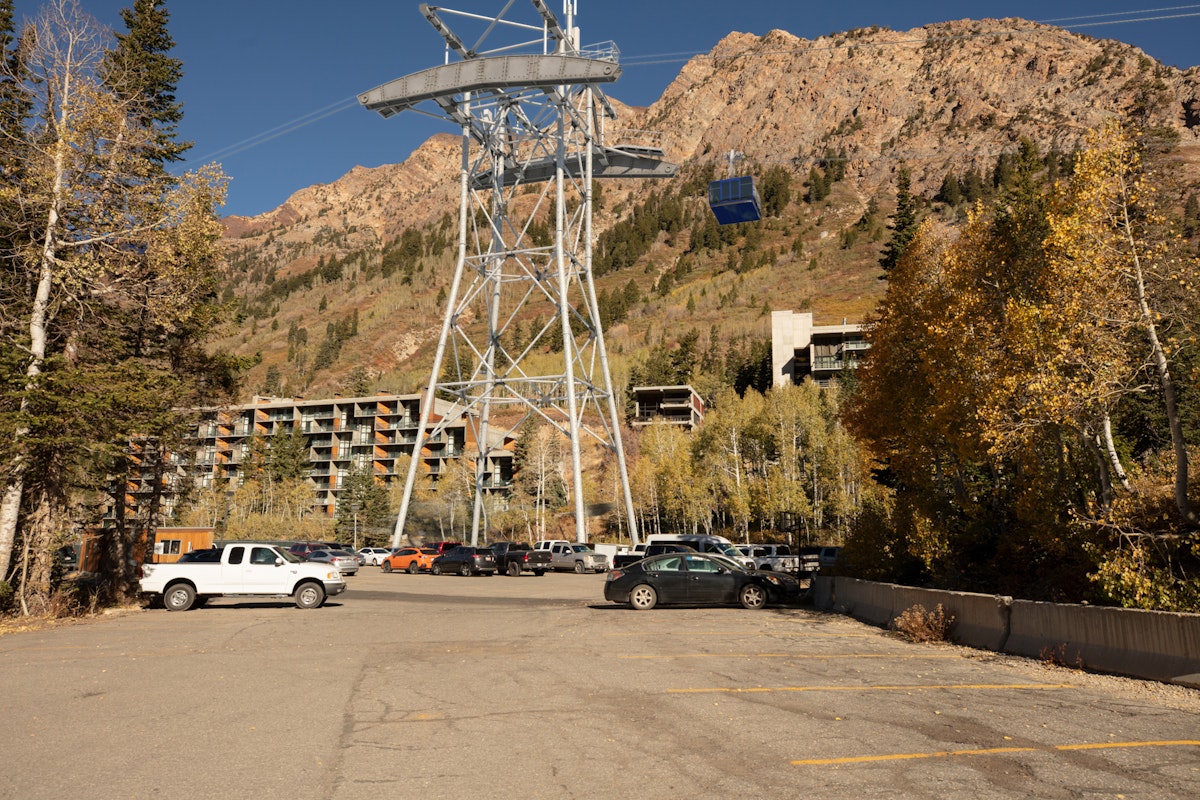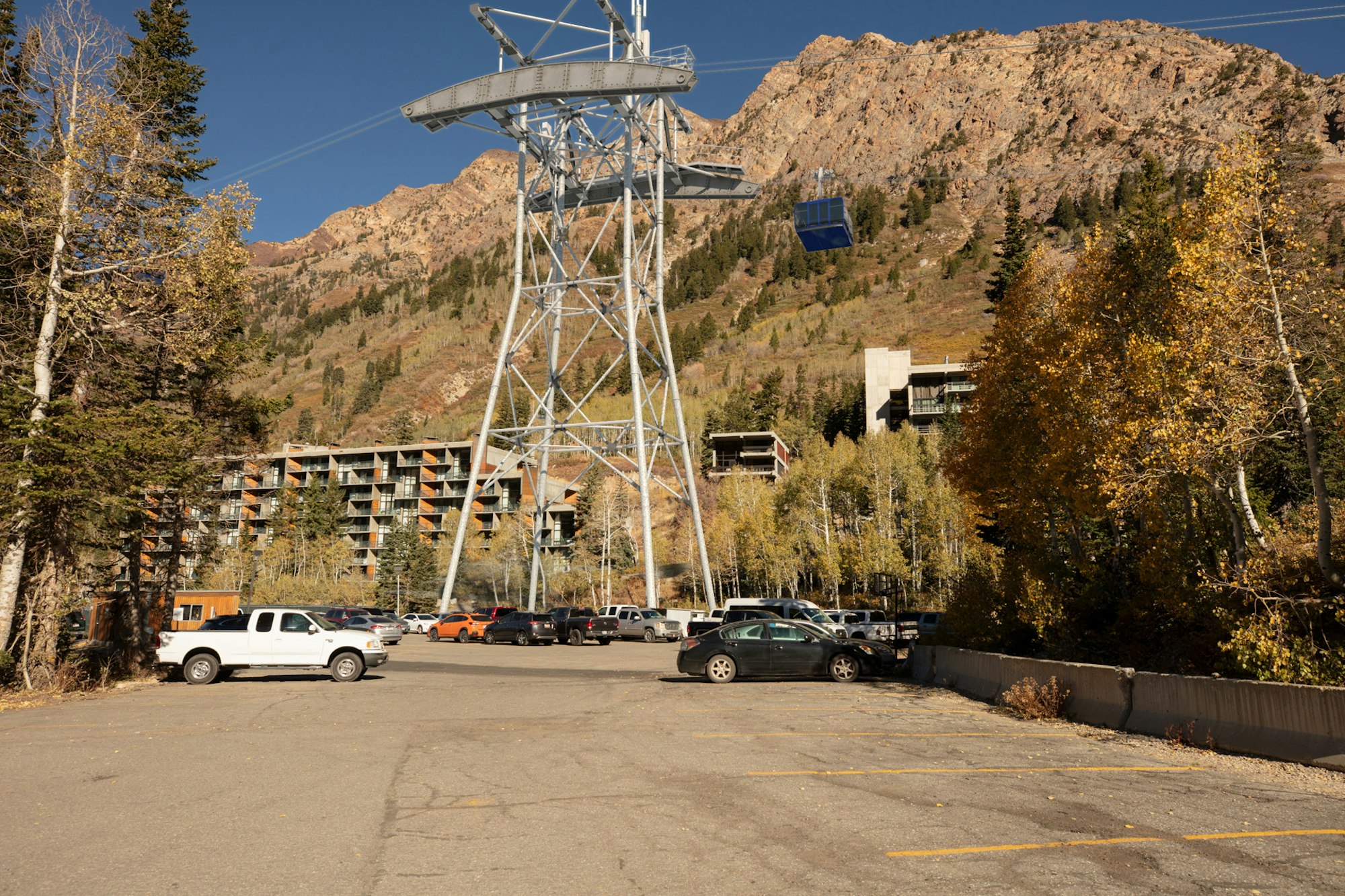Featured Image: Courtesy of UDOT
It’s not every day that you see an eight-mile-long gondola alongside the road. Utah Department of Transportation (UDOT) has taken a creative approach to the ongoing traffic issue at Little Cottonwood Canyon. No widening of the highway here! A gondola will be their answer to getting to and from Alta and Snowbird. But that’s not all UDOT’s doing to combat ski traffic. Public bus services are being increased and parking lots expanded. John Gleason, UDOT Director of Public Relations, breaks down the three phases of the project.


PHOTO: Courtesy of UDOT
In Senate Bill 277, the 2017 Legislature approved the use of $100 million for transportation improvements in areas with recreation and tourism activity that currently experience significant congestion. With that criteria, UDOT established a prioritization process, and the Transportation Commission identified four areas that warranted further evaluation.
Little Cottonwood Canyon was identified as a priority area for environmental study through the Transportation Commission prioritization process.
UDOT began an Environmental Impact Statement (EIS) in the spring of 2018 for Little Cottonwood Canyon, with the purpose of substantially improving roadway safety, reliability, and mobility on S.R. 210 from Fort Union Boulevard through the Town of Alta for all users on S.R. 210.
Originally, UDOT proposed solutions for ski traffic, such as widening the highway and increasing bus routes. What ultimately led to the gondola plan being selected?
Gondolas have been studied for many years prior to the EIS as a potential component of mobility enhancements for the canyon. While the gondola is a long-term transportation solution for the canyon, UDOT will address the transportation challenges of today with a phased implementation plan based on available funding, including components of the Enhanced Bus Service Alternative with no canyon roadway widening.
PHASE 1
When implemented, Phase 1 will include improved and increased bus service scaled to meet demand (with no canyon roadway widening), constructing resort bus stops and a mobility hub at the Gravel Pit, tolling, and winter roadside parking restrictions. Increased bus service, tolling and resort stops will be assessed further for Big Cottonwood Canyon in Phase 1. Phase 1 is anticipated to be operational in the fall of 2025.
PHASE 2
Based on available funding, Phase 2 improvements will include widening and other improvements to Wasatch Boulevard, constructing snow sheds, and implementing trailhead parking improvements.
PHASE 3
Implementation of Gondola Alternative B in Phase 3 is dependent on available funding. During this phase, UDOT will construct a base station with 2,500 parking spaces near the mouth of Little Cottonwood Canyon, where all users would travel directly to the base station before loading a gondola cabin. Each gondola cabin can hold up to 35 people, and travelers could expect a cabin to arrive every two minutes. Once the gondola is operational in Phase 3, bus service in Little Cottonwood Canyon would be discontinued.
UDOT identified Gondola Alternative B with phased implementation of an improved and increased bus service as the selected alternative based on its transportation performance, cost, and impacts on the natural and human environment and, because funding is not yet available for the gondola, the ability to implement mobility enhancements sooner.
Gondola Alternative B overall best meets the project purpose and need for long-term transportation needs for the canyon primarily because of its reliability; it operates in a separate alignment from the roadway, avoiding delays related to adverse weather, crashes, slide-offs and slow-moving traffic.
Gondola B has the highest visual impacts but low impacts on the watershed, wildlife movement and climbing boulders.


PHOTO: Courtesy of UDOT
This will be determined during final design during Phase 3. Cabin designs allow a variety of configurations and seating and standing combinations: such as 18 to 20 seated and 15 to 17 standing or about 26 if all are seated or more if all are standing.
Will the gondola be safe to ride during extreme weather and high winds?
The gondola system could operate while it is snowing and in wind speeds up to 68 miles per hour and would likely be able to continue to operate during weather events that would require the road to close or become congested because of the bad weather. It should also be noted that the gondola alignment would be located at the bottom of Little Cottonwood Canyon, which is less prone to the type of strong winds that can stop the Snowbird Tram, which is near the ridgeline of the mountains.
During interlodge events, road access on S.R. 210 is shut down as well while UDOT performs avalanche mitigation. During these events, people are not allowed outside in the upper canyon, and so, to avoid delivering passengers into a hazardous conditions, the gondola would not operate except for emergency situations.
How many stops will the gondola offer?
The gondola will provide direct service from the base station to Snowbird and Alta, one stop at each resort, two resort stops in total.
Walk us through the construction motorists can expect in the years before this project is complete.
UDOT has identified potential construction impacts such as air quality, noise, traffic, etc. and the measures that would be taken to minimize those impacts.
This is discussed in greater detail in the Record of Decision, Section 6.12 Mitigation Measures for Construction Impacts (pdf page 95).



![[GIVEAWAY] Win a Head-to-Toe Ski Setup from IFSA](https://www.datocms-assets.com/163516/1765920344-ifsa.jpg?w=200&h=200&fit=crop)


![[GIVEAWAY] Win a Legendary Ski Trip with Icelantic's Road to the Rocks](https://www.datocms-assets.com/163516/1765233064-r2r26_freeskier_leaderboard1.jpg?auto=format&w=400&h=300&fit=crop&crop=faces,entropy)




![[GIVEAWAY] Win a Head-to-Toe Ski Setup from IFSA](https://www.datocms-assets.com/163516/1765920344-ifsa.jpg?auto=format&w=400&h=300&fit=crop&crop=faces,entropy)


